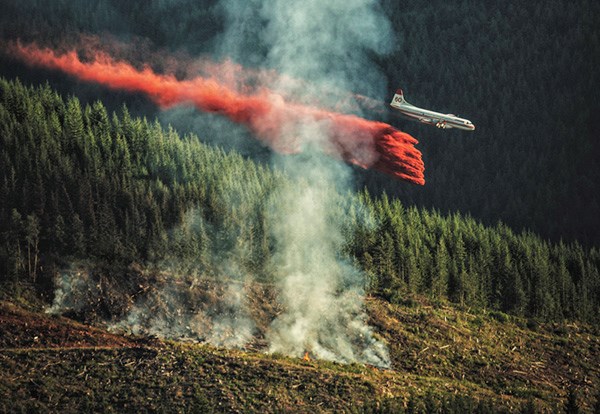As officials begin to assess the damage in Fort McMurray and plan for the return of the 90,000 who were forced from their homes by wildfire earlier this month, some are wondering: Could it happen in Squamish?
The answer is complicated, according to District of Squamish emergency coordinator Alexis Kraig.
“Do I worry we could have an identical fire as what happened in Fort McMurray? No, that is not the context of where we live in,” she said. “But I do think the possibility of wildfires and the importance of doing fuel-smart communities and interface [programs]. Those are very important things for us to look at.”
The type of wood fuel Squamish has is very different than what is in Fort McMurray, Kraig said. Squamish is surrounded by a variety of tree species such as Douglas fir, western red cedar, Sitka spruce and alder that don’t burn as quickly as the types around Fort McMurray.
“What you see in Australia, California or even what you see in the interior of the Okanagan, the way in which fuel spreads during fire has more potential to be similar to what you see in Fort McMurray,” Kraig said. “That being said, though, we are having drier and drier seasons. And, for example, what happened with the Elaho fire [last summer], no one would could have predicted a fire in this kind of terrain would have ran as much as it did.”
Mayor Patricia Heintzman agreed wildfires and how dry the district can become are concerns.
“You look at those interface areas between the forests and the neighbourhoods – it is always challenging,” she said. “It could be as simple as someone smoking and throwing their butt on the ground.”
The small Squamish fire near the Rockridge subdivision on May 7 was an early start to the fire season, she added.
“You always have to be cognizant out there, vigilant,” said the mayor.
Kraig and district staff are currently working on an integrated evacuation plan with the Squamish Nation and the Squamish-Lillooet Regional District in case the worst happens, whether it be an out-of-control wildfire, an earthquake, flood or other disaster.
A Squamish evacuation drill is planned for October, Kraig said, adding the plan considers evacuating a neighbourhood or moving everyone in the district – like the city-wide evacuation that occurred in Fort McMurray.
Kraig was recently a part of a “table top” meeting in Squamish, she said, that brought together responder groups with representatives from Squamish Nation, Squamish Fire Rescue, Squamish RCMP, Squamish Search and Rescue, Ministry of Transportation and Infrastructure, the hospital and Emergency Management BC.
“We went through roles and responsibilities and clarified the communications process,” she said.
If a wildfire were to break out and threaten Squamish, Kraig said, a process is ready to be set into motion.
“We would be working with the [BC Wildfire Service],” she said. “They build a map based on predictions of where they think the fire is going to be in a week’s time, a month’s time. We would be working with them so that if it hit a certain trigger point, we would put people on alert. If it hit another trigger point, this is when the order would come in, and this is when we would start to evacuate.”
The District of Squamish would also work in partnership with other communities in the Sea to Sky Corridor and the Squamish-Lillooet Regional District.
“For, if we had to evacuate, where would we go? How would we host people? That kind of stuff,” she said.
If Squamish residents had to be evacuated and Highway 99 was impassable in both directions, the district’s highway bypass plan would be put into action, Kraig said.
“This is something that the Ministry of Transportation and the province has and we have which allows us to utilize the ferry terminals with ferries if we had to in a worst-case scenario,” she said.
Kraig said the situation in Fort McMurray and other disasters show how important it is people have emergency preparedness kits in their homes.
“You need that book that has your critical information, your insurance pieces, all those basic pieces,” she said.
To learn more at squamish.ca/our-services/emergency-program.



